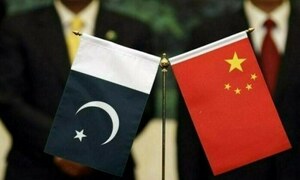Data manipulation has become a standard normal activity for Pakistani governments though, in all fairness, one cannot say that such a practice is limited to Pakistani political leadership - be it civilian or military. Other countries do engage in data manipulation but exhibit greater shrewdness by remaining within the realm of believability.
Data is usually manipulated in three ways. First the data collection agency can change the weightage of one or more components to show say a reduction in inflation. This implies that yesteryear's rate of inflation can not be compared with the current year's as it is tantamount to comparing apples and oranges. Dr Hafeez Sheikh faced with food inflation of between 24 to 25 percent reduced the weightage of food in Consumer Price Index by a significant 6 percent. And viola! The PPP-led coalition government cited lower rate of inflation, which it claimed was due to its macroeconomic policies.
Secondly, the government of the day can alter the base year to manipulate the rate. In this context it is relevant to note that the normal practice used by statisticians is to change the base year every ten years or so as by keeping the base year constant for a longer period would make more than decade-long comparisons unrealistic. But here too the government of the day can engage in deliberate selection of a poor performing base year and thereby show its performance as better than is in fact the case. An example is the choice of 1999-2000 as the base year - the year after Musharraf's coup (and before 9/11) when he was an international pariah leading to low domestic productivity with exports plummeting as a consequence.
And finally there is the Pakistani way of data manipulation, which essentially entails changing a macroeconomic indicator say the Gross Domestic Product (GDP) without changing its components to ensure credibility. Two extremely disturbing observations need to be highlighted in this context. The Economic Survey 2011-12 (the last year of the PPP-led coalition government) cited 1999-2000 as the base year - a year selected by the Musharraf government as noted above for an appallingly poor economic performance in the aftermath of his coup. However, miraculously in 2012-13 - the PPP completed its tenure in March 2013 and the caretakers surrendered power to PML-N by early June - national data showed 2005-06 as the base year. This implied a recalculation of the data for the PPP-led government years. Logic dictates that this recalculation should have accounted for considerably lower rates of growth in the Economic Survey 2012-13 in comparison to the Survey of the previous years, however, to add to the statistical confusion some years showed a growth rate lower and others higher: (i) 6.8 percent 2006-07 growth downgraded to 5.5, (ii) 3.7 percent 2007-08 growth upgraded to 5 percent, (iii) 1.7 percent 2008-09 growth downgraded to 0.4 percent, (iv) 3 percent 2009-10 growth downgraded to 2.6 percent, (v) 3 percent 2010-11 growth upgraded to 3.7 percent, (vi) provisional 3.7 percent 2011-12 growth upgraded to 4.4 percent.
For those who consider this as obvious data manipulation with little finesse may perhaps not be surprised to learn that the 2013-14 Survey made two further amendments for years past, a practice that is as inexplicable as it is unusual: (i) 2010-11 growth was further downgraded from 3.7 percent to 3.6 percent and (ii) 4.4 percent in 2011-12 was further downgraded to 3.6 percent. This enabled the Federal Finance Minister Ishaq Dar to make the rather inane claim that his first year as the finance minister led to a growth rate in excess of 4 percent for the first time in six years. While one may facetiously argue that it may have been simpler to raise the growth rate for 2013-14 instead of tampering with past data, however, one would assume that the Pakistan Bureau of Statistics (PBS) may have pointed out that further increasing the growth rate would easily be challenged by the independent think tanks as well as the media. As matters stand today the growth rate of 4.1 percent remains challenged as an overstatement of components of GDP growth. This included the overstatement of large-scale manufacturing growth by 1 percent (with data not including March when output was negative 2.7 percent) and construction sector growth (with inexplicably 11.3 percent sectoral growth not backed by the 4.2 percent cement consumption growth).
It is relevant to note that the Economic Survey is released a day or so prior to the budget announcement in parliament and the usual time for the budget speech is in early June thus allowing for debate till the start of the new fiscal year on 1st July. Given the logistics required to compile and then print the Survey the usual practice is to limit data till end-March latest and in some years to end-February. This enables the administration to claim better provisional data then may in fact be the case.
In the Survey for last year the Sharif administration overstated the growth rate significantly - a claim that it persisted in while neither multilateral donors nor domestic economists and think tanks lent it any credibility. Such practice is not in the interests of any administration as it not only disables itself from taking timely measures to mitigate a looming crisis but is also easily challenged by the general public (acutely aware of the value of each rupee earned) as well as economists/think tanks.
Next week's article would look at data manipulation with respect to the rate of inflation.
BR100
12,121
Increased By
344.9 (2.93%)
BR30
35,374
Increased By
964 (2.8%)
KSE100
113,955
Increased By
2628 (2.36%)
KSE30
34,878
Increased By
885.3 (2.6%)




















Comments
Comments are closed.